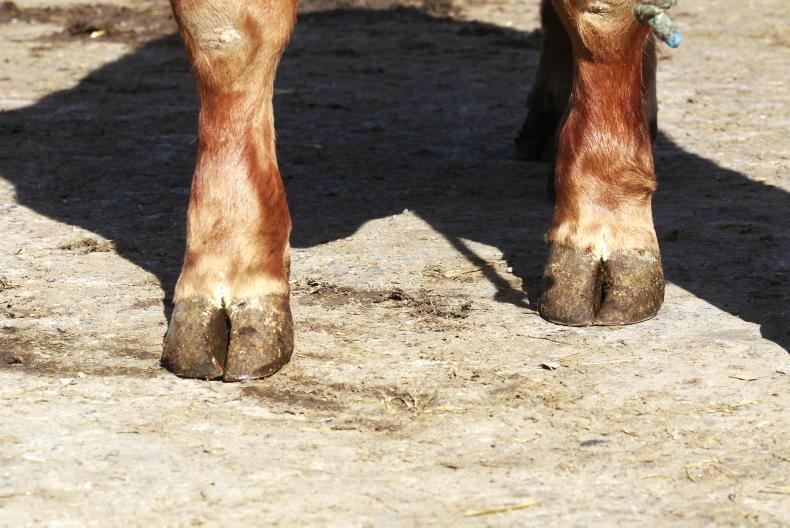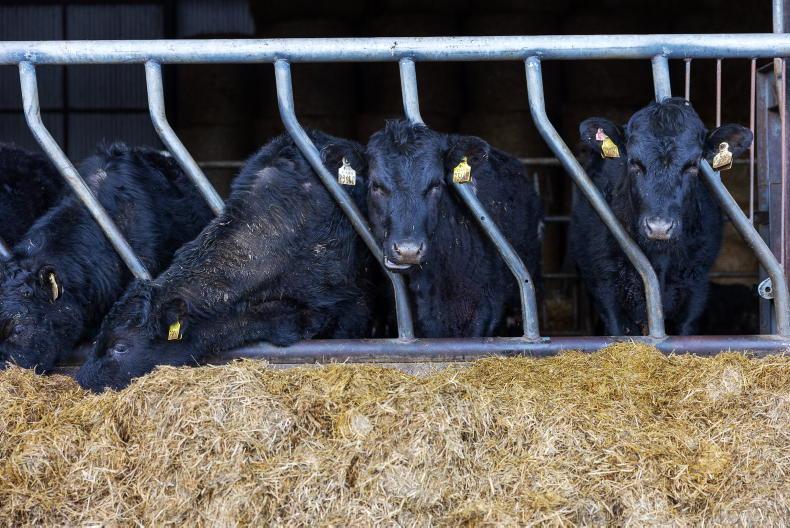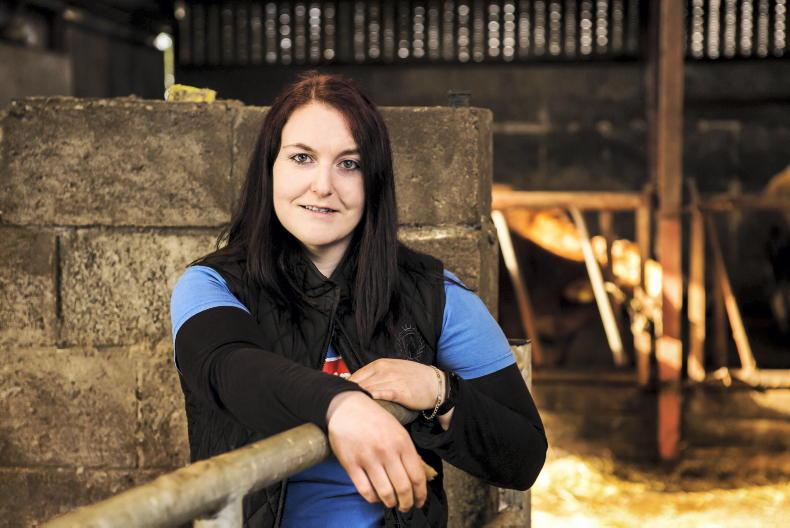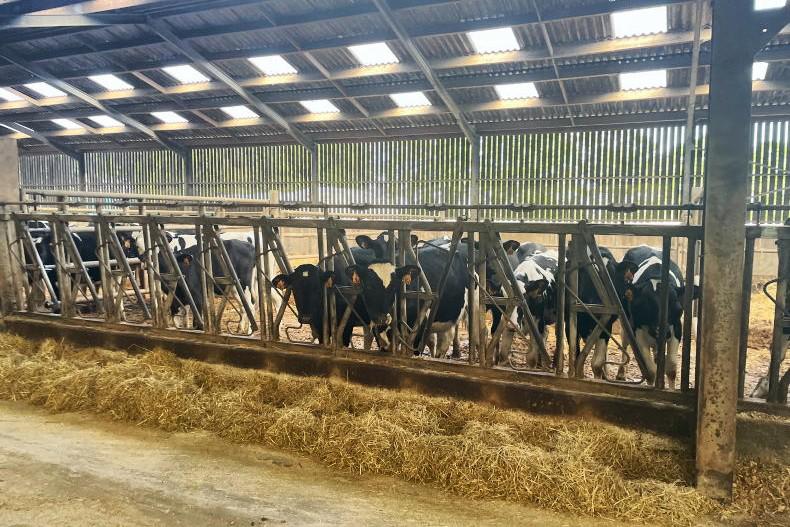Average grass growth rate for the last week was just over 49kg DM/ha, but this wasn’t the case for many farms in the south and east. An average of 15mm-20 mm of rain fell on Monday night of last week, which many though would get growth to bounce back.
But the persistent northerly wind that has been a major issue all year seemed to dry up most of the rain that fell. The rain might have made the place green again, but it didn’t do much to increase growth rates.
As a result, there is a huge proportion of farms that are struggling to maintain farm cover, never mind trying to build it up. We have around 8-10 weeks of grazing left for the year.
If you are one of those farmers that is in the position of having a low farm cover, then you need to put a plan in place or else you will be faced with housing your cows early.
Reduce demand by selling cull cows, removing young stock from the platform or by increasing supplementation (meal and/or silage).
The current advice for managing grass is to allow farms time to recover by extending the rotation length to 35-40 days. This involves dividing the farm into 35-40 sections and grazing one section each day.
For example, on a 100 acre farm, you should be grazing no more than 2.5 to 2.9 acres daily. The shorter the rotation, the larger the area grazed each day, and the longer the rotation, the smaller the area grazed daily.
It is getting close to the final call for fertiliser in the coming weeks. Firstly, see what you have left to spread so you don’t exceed your nitrogen allowance.
On lower stocked farms, 15 to 20 units/acre should be sufficient, while on higher stocked farms that need to grow more grass, up to 30 units/acre should be spread. Half the amount is recommended on paddocks that have good clover content.
Those facing soil moisture deficits will have to feed heavily, remove culls and young stock from the milking platform, and extend rotations to 30-35 days.With little rain expected, farmers in the north and west should be able to resume normal grazing practices later this week.A weekly feed budget should be done to ensure to hit the target grass cover on a week-to-week basis, helping to avoid having too much or too little grass.Ronan Joyce – Belcarra, Co Mayo
It’s been a tough few weeks. Cows were fully housed last week due to poor ground conditions, but we managed to get them back out over the weekend, though they remain unsettled.
While housed, we zero-grazed some third cut silage that was dry enough to travel, feeding 6kg/day. There’s about 3ha left, so we will continue to zero-graze the rest.
We plan to graze one hectare daily for the next 30 days, then reassess based on the weather. Growth is low as we missed a round of fertiliser, but we applied 30-35 units/acre of CAN to any driveable ground over the weekend.
Stocking Rate (cow/ha) 3.21
Growth Rate (kg/day) 36
Average Farm Cover (kg/cow) 310
Yield (l/cow) 15
Fat% 5.17
Protein% 4.21
Milk Solids (kg/cow) 1.45
Concentrates 3
Brian Doheny – Tullaroan, Co Kilkenny
The recent rain has really driven on growth, although we are still behind our target. Our average farm cover is 694kg DM/ha. We will increase concentrate to 6kg and introduce 2.5kg of silage for the next 7-10 days, which will hopefully put us back on target.
Our stocking rate will come back to 2.6 cows/ha once our silage ground comes back into the rotation.
We scanned our cows recently and it was average enough, with 10% empty in our cows and 6% empty in our heifers after 10 weeks of breeding. After a tough spring on both man and beast, it could have been a lot worse.
Stocking Rate (cow/ha) 3.38
Growth Rate (kg/day) 75
Average Farm Cover (kg/cow) 205
Yield (l/cow) 17.5
Fat% 4.87
Protein% 3.9
Milk Solids (kg/cow) 1.53
Concentrates 6
Tony Byron – Teagasc Curtins, Co Cork
We are feeding heavy to get by. There is 5kg of concentrate and 5kg of silage going in at the moment. We plan to continue with this for the next 10 days and reevaluate the situation then.
Cows in the clover group are going into covers of 1,100-1,200 kg Dm/ha, with clover composition averaging between 10%-15%.
We blanket spread the whole farm with 30 units/acre of 46% protected urea last week and we have half a bag of potash to go out next.
There was 11% of our cows empty, with 48% holding to a sexed straw out of the 56 cows that got one.
All cows were vaccinated for salmonella last week.
Stocking Rate (cow/ha) 2.52
Growth Rate (kg/day) 37
Average Farm Cover (kg/cow) 309
Yield (l/cow) 14.5
Fat% 5.71
Protein% 4.1
Milk Solids (kg/cow) 1.47
Concentrates 5
Ger McSweeney – Millstreet, Co Cork
Regrowths are good. We have got enough rain over the last 10 days to keep the grass growing. We had 19mm of rain on Sunday night and another 31mm fell over the previous week. A recent fodder budget suggests we should have enough for winter.
Calves are creep grazing covers of 1,700kg DM/ha ahead of the cows and seem very content.
We weighed the heifers about a month ago and they were doing 1.1kg of liveweight a day. We introduced a half a kilo of ration last week and will ramp it up to a full kilo at weaning time.
The bulls will be vaccinated with Bovilis Bovipast this week and we will weigh them while they are in the crush. They will get the booster in four weeks’ time.
System Suckler to finishing
Soil type mixed in nature
Farm cover (kg/DM/ha) 819
Growth (kg/day) 47
Demand (kg/day) 35
Peter Doyle – Derrypatrick herd, Co Meath
The bullocks and heifers are grazing covers of 1,500kg DM/ha, although the quality is just right.
We would like the pre-grazing covers to be slightly higher for the time of year. As a result, we are buffer feeding 25% of the stock with silage to help us build up covers for the autumn.
We got our last application of fertiliser out last week. We went with 18 units/acre of protected urea.
Slurry tanks are about a quarter full, and we plan to get them emptied in the next week to be ready for housing.
We weighed our heifers and bullocks last week and they were 550kg and 580kg, respectively. Both groups are doing a kilo of liveweight a day.
System Suckler calf to beef
Soil type free draining
Farm cover (kg/DM/ha) 757
Growth (kg/day) 52
Demand (kg/day) 41
Niall O’Meara – Portumna, Co Galway
We are currently in the midst of calving, so everyone is fully engaged. We’ve received just enough rain. Anymore, and we risk causing some damage.
The cows are getting a fresh strip of grass both morning and evening. The paddock cover was ideal when I started grazing, but it’s now up to 2,500 kg DM/ha. While graze-outs aren’t perfect, the cows are settling well.
There is no slurry to go out as all tanks were emptied in the springtime.
Last week, I applied my final round of chemical nitrogen, I went with 8-8.5 units/acre of 46% protected urea.
There is some 0-7-30 in the yard that I will get out in the next few weeks on paddocks that scored low for P and K in the last soil test.
System Suckler to weaning
Soil type variable
Farm cover (kg/DM/ha) 805
Growth (kg/day) 45
Demand (kg/day) 34
Average grass growth rate for the last week was just over 49kg DM/ha, but this wasn’t the case for many farms in the south and east. An average of 15mm-20 mm of rain fell on Monday night of last week, which many though would get growth to bounce back.
But the persistent northerly wind that has been a major issue all year seemed to dry up most of the rain that fell. The rain might have made the place green again, but it didn’t do much to increase growth rates.
As a result, there is a huge proportion of farms that are struggling to maintain farm cover, never mind trying to build it up. We have around 8-10 weeks of grazing left for the year.
If you are one of those farmers that is in the position of having a low farm cover, then you need to put a plan in place or else you will be faced with housing your cows early.
Reduce demand by selling cull cows, removing young stock from the platform or by increasing supplementation (meal and/or silage).
The current advice for managing grass is to allow farms time to recover by extending the rotation length to 35-40 days. This involves dividing the farm into 35-40 sections and grazing one section each day.
For example, on a 100 acre farm, you should be grazing no more than 2.5 to 2.9 acres daily. The shorter the rotation, the larger the area grazed each day, and the longer the rotation, the smaller the area grazed daily.
It is getting close to the final call for fertiliser in the coming weeks. Firstly, see what you have left to spread so you don’t exceed your nitrogen allowance.
On lower stocked farms, 15 to 20 units/acre should be sufficient, while on higher stocked farms that need to grow more grass, up to 30 units/acre should be spread. Half the amount is recommended on paddocks that have good clover content.
Those facing soil moisture deficits will have to feed heavily, remove culls and young stock from the milking platform, and extend rotations to 30-35 days.With little rain expected, farmers in the north and west should be able to resume normal grazing practices later this week.A weekly feed budget should be done to ensure to hit the target grass cover on a week-to-week basis, helping to avoid having too much or too little grass.Ronan Joyce – Belcarra, Co Mayo
It’s been a tough few weeks. Cows were fully housed last week due to poor ground conditions, but we managed to get them back out over the weekend, though they remain unsettled.
While housed, we zero-grazed some third cut silage that was dry enough to travel, feeding 6kg/day. There’s about 3ha left, so we will continue to zero-graze the rest.
We plan to graze one hectare daily for the next 30 days, then reassess based on the weather. Growth is low as we missed a round of fertiliser, but we applied 30-35 units/acre of CAN to any driveable ground over the weekend.
Stocking Rate (cow/ha) 3.21
Growth Rate (kg/day) 36
Average Farm Cover (kg/cow) 310
Yield (l/cow) 15
Fat% 5.17
Protein% 4.21
Milk Solids (kg/cow) 1.45
Concentrates 3
Brian Doheny – Tullaroan, Co Kilkenny
The recent rain has really driven on growth, although we are still behind our target. Our average farm cover is 694kg DM/ha. We will increase concentrate to 6kg and introduce 2.5kg of silage for the next 7-10 days, which will hopefully put us back on target.
Our stocking rate will come back to 2.6 cows/ha once our silage ground comes back into the rotation.
We scanned our cows recently and it was average enough, with 10% empty in our cows and 6% empty in our heifers after 10 weeks of breeding. After a tough spring on both man and beast, it could have been a lot worse.
Stocking Rate (cow/ha) 3.38
Growth Rate (kg/day) 75
Average Farm Cover (kg/cow) 205
Yield (l/cow) 17.5
Fat% 4.87
Protein% 3.9
Milk Solids (kg/cow) 1.53
Concentrates 6
Tony Byron – Teagasc Curtins, Co Cork
We are feeding heavy to get by. There is 5kg of concentrate and 5kg of silage going in at the moment. We plan to continue with this for the next 10 days and reevaluate the situation then.
Cows in the clover group are going into covers of 1,100-1,200 kg Dm/ha, with clover composition averaging between 10%-15%.
We blanket spread the whole farm with 30 units/acre of 46% protected urea last week and we have half a bag of potash to go out next.
There was 11% of our cows empty, with 48% holding to a sexed straw out of the 56 cows that got one.
All cows were vaccinated for salmonella last week.
Stocking Rate (cow/ha) 2.52
Growth Rate (kg/day) 37
Average Farm Cover (kg/cow) 309
Yield (l/cow) 14.5
Fat% 5.71
Protein% 4.1
Milk Solids (kg/cow) 1.47
Concentrates 5
Ger McSweeney – Millstreet, Co Cork
Regrowths are good. We have got enough rain over the last 10 days to keep the grass growing. We had 19mm of rain on Sunday night and another 31mm fell over the previous week. A recent fodder budget suggests we should have enough for winter.
Calves are creep grazing covers of 1,700kg DM/ha ahead of the cows and seem very content.
We weighed the heifers about a month ago and they were doing 1.1kg of liveweight a day. We introduced a half a kilo of ration last week and will ramp it up to a full kilo at weaning time.
The bulls will be vaccinated with Bovilis Bovipast this week and we will weigh them while they are in the crush. They will get the booster in four weeks’ time.
System Suckler to finishing
Soil type mixed in nature
Farm cover (kg/DM/ha) 819
Growth (kg/day) 47
Demand (kg/day) 35
Peter Doyle – Derrypatrick herd, Co Meath
The bullocks and heifers are grazing covers of 1,500kg DM/ha, although the quality is just right.
We would like the pre-grazing covers to be slightly higher for the time of year. As a result, we are buffer feeding 25% of the stock with silage to help us build up covers for the autumn.
We got our last application of fertiliser out last week. We went with 18 units/acre of protected urea.
Slurry tanks are about a quarter full, and we plan to get them emptied in the next week to be ready for housing.
We weighed our heifers and bullocks last week and they were 550kg and 580kg, respectively. Both groups are doing a kilo of liveweight a day.
System Suckler calf to beef
Soil type free draining
Farm cover (kg/DM/ha) 757
Growth (kg/day) 52
Demand (kg/day) 41
Niall O’Meara – Portumna, Co Galway
We are currently in the midst of calving, so everyone is fully engaged. We’ve received just enough rain. Anymore, and we risk causing some damage.
The cows are getting a fresh strip of grass both morning and evening. The paddock cover was ideal when I started grazing, but it’s now up to 2,500 kg DM/ha. While graze-outs aren’t perfect, the cows are settling well.
There is no slurry to go out as all tanks were emptied in the springtime.
Last week, I applied my final round of chemical nitrogen, I went with 8-8.5 units/acre of 46% protected urea.
There is some 0-7-30 in the yard that I will get out in the next few weeks on paddocks that scored low for P and K in the last soil test.
System Suckler to weaning
Soil type variable
Farm cover (kg/DM/ha) 805
Growth (kg/day) 45
Demand (kg/day) 34










SHARING OPTIONS